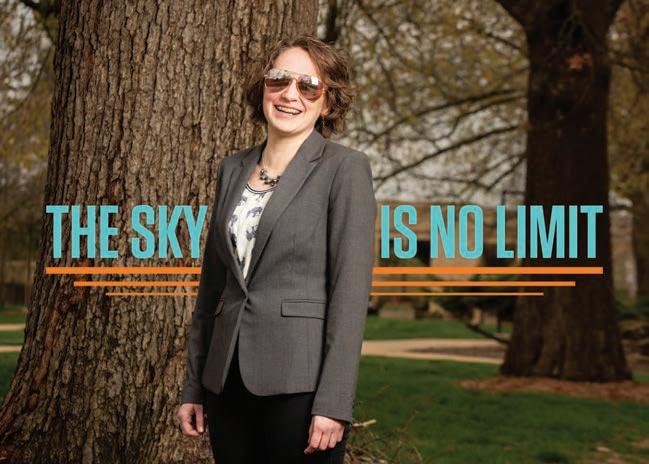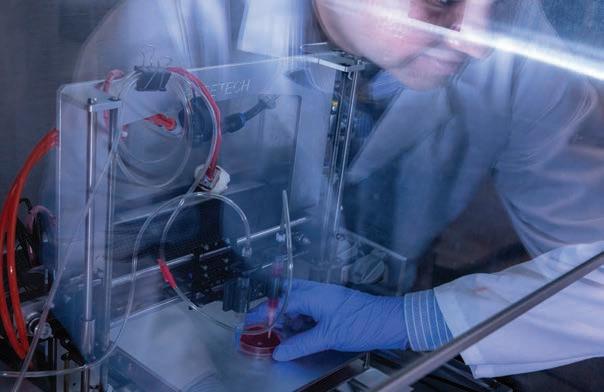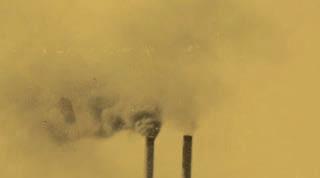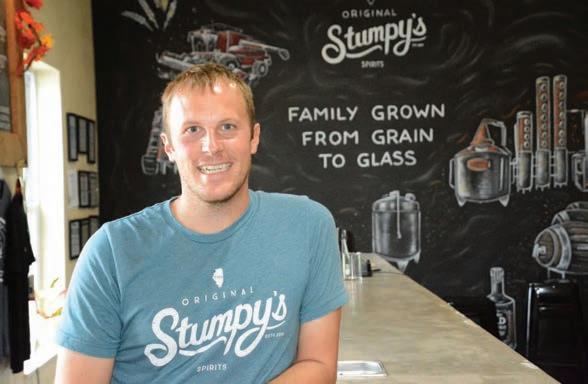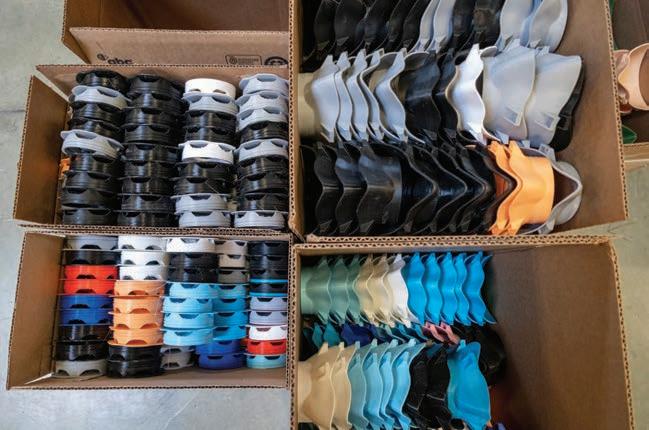
5 minute read
Students, alumni share virtual STEM outreach with housebound kids
from Missouri S&T Magazine, Summer 2020
by Missouri S&T Library and Learning Resources | Curtis Laws Wilson Library
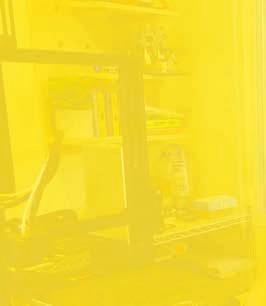
When the coronavirus pandemic caused schools to close, S&T students and alumni took the opportunity to share their STEM (science, technology, engineering and math) knowledge in unique ways with housebound kids.
S&T’s Mars Rover Design Team members adapted their traditional onsite K-12 outreach visits to virtual learning sessions for curious kids.
“Teaching future engineers and STEM innovators about space exploration is a big part of the Mars Rover Design Team’s mission,” says Téa omas, a senior in business and management systems and the team’s public relations lead. “We want to help parents and teachers who are homeschooling, and the outreach is a lot of fun for us.”
In mid-March, omas issued a Facebook invitation oering virtual outreach sessions

and received an overwhelming response from almost 200 parents and teachers across five countries and 12 U.S. states. She set up four presenters from the 75-member team to share their knowledge using various video conferencing platforms. e sessions drew small groups of inquisitive children, mainly ages 6 to 9, who asked questions about the rover’s assemblies, autonomous navigation system, programming languages and wheel construction, as well as its 15 motors.
Leonardo Sent (pictured above), a fourthgrader from Orange County, Calif., attended all the S&T virtual sessions.
“I learned how to use the Mantis suspension and how the many dierent assemblies you have work inside the body o the Linux operating system,” says Sent, who already built a rover through NASA’s Jet Propulsion Laboratory OpenSource Rover Project and created instructional YouTube videos for each assembly.
Grace Deitzler, BSci’16, who is working toward a Ph.D. in microbiology at Oregon State University, reached out to Facebook friends with an oer to teach their children anything they wanted to learn about science.
Deitzler spoke on video to a kindergartner and second-grader on the timely subject of the life cycle of germs and customized a session with another second-grader about microorganisms in the ocean and their importance to coral reefs. She advocates scientific representation to children at an early age.
“As a kid, I only knew a few scientists who let me ask questions,” Deitzler says. “Kids want to learn … and I want to show them what the path to becoming a scientist is like.”
BIOHAZARD BREATHALYZER COULD DETECT CORONAVIRUS
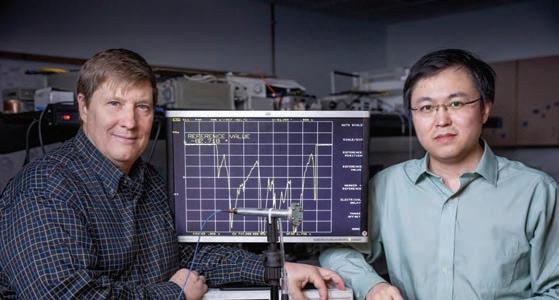

S&T electrical and computer engineering researchers are using machine learning to build a system to alert authorities to airborne biohazards such as the coronavirus as travelers pass through airport security checkpoints.
“ e mission of this lab is to invent sensors that have ultra-high sensitivity,” says assistant professor Jie Huang. “We are advancing new frontiers in research.”
To trigger the airborne-biohazard alert system, individuals would exhale into a sensor Huang’s team is developing to detect viruses in the breath. If a virus is detected, the breath would be chemically tagged for further testing in a spectrometer. e entire process would take less than a minute and could eventually dierentiate between a cold, flu or coronavirus. e researchers hope the system could be made widely available in accessible locations so people could self-test, similar to blood pressure monitors in retail stores.
“ is could provide valuable information to the individual, done in private of course,” says visiting professor Rex E. Gerald. “We focused on airports first to try to mitigate the impact of canceled flights in the event of a pandemic, which could cost billions of dollars to the airline industry.”
With each iteration of the prototype device, the team provided researchers in biology, chemistry and medicine an opportunity to evaluate the evolving design of the sensor system. e researchers adjust and modify the system based on their feedback. e front-end sensor, which would indicate whether someone is sick or healthy, could be ready for clinical trials in about a year. e full system with chemical tagging and a spectrometer will take significantly longer to develop. e biohazard sensor showcases the types of research that complement the University of Missouri System’s NextGen Precision Health Initiative, which is expected to accelerate medical breakthroughs by harnessing the research expertise of the four UM System universities.
Working with Huang and Gerald are lead graduate student Chen Zhu, assistant research professor Qingbo Yang and artificial intelligence expert Donald Wunsch, the Mary K. Finley Distinguished Professor of Computer Engineering.
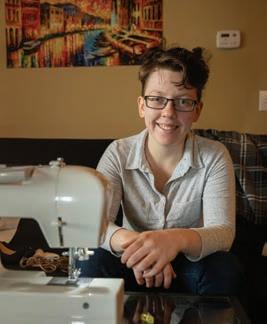
‘GREASED LIGHTNING’ SCORES BOTH HUMAN-POWERED TITLES
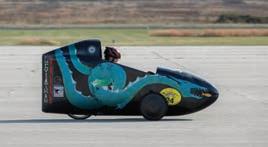
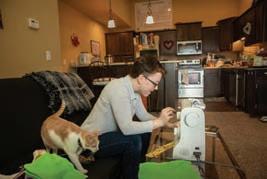
When bush fires in 2019 and early 2020 ravaged Australia and killed an estimated 1 billion animals, rescuers kept orphaned kangaroos, wallabies, koalas, bandicoots and other animals comfortable in pouches, wraps and nests handmade by crafters from around the world.
Laurie Gilson, a student in mechanical and metallurgical engineering at S&T, joined the eort. She organized an assembly-line approach to sew pouches for animals and wraps for bats and to crochet nests as homes for birds through Relief Crafters of America.
Gilson’s outreach to animals isn’t limited to those half a world away. She also helps animals close to home, crafting items for Lakeside Nature Center in Kansas City, Mo.
“I sent a big donation to Australia, then thought, ‘Wait a minute,’” Gilson says. “ey need help right in my backyard.” A pandemic couldn’t stop an S&T design team in pursuit of success.
S&T’s Human Powered Vehicle Design Team is a national champion after taking first place at both of the American Society of Mechanical Engineers’ 2020 Human Powered Vehicle Challenge Digital Competitions, ASME E-Fest North and E-Fest South.
Traditionally held in person at dierent universities, the competitions were moved online because of COVID-19 precautions. Teams were judged on a design report and presentation. e competitions challenge students to design, build and operate a human-powered vehicle for practical use. Vehicles typically resemble aerodynamic cycles. S&T’s vehicle, Greased Lightning, features two wheels in the front and one in the back. It has a recumbent-style steel frame designed to allow riders to recline as they pedal. (Pictured:
SEWING TO SAVE THE ORPHANS
Leviathan, S&T’s previous human-powered vehicle.)
S&T DEFENSIVE END SIGNS WITH KANSAS CITY CHIEFS
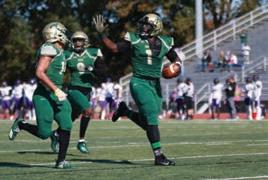
Miner defensive end Tershawn Wharton, who studied psychology at S&T, signed a free-agent contract with the NFL’s Kansas City Chiefs. Wharton was a record setter at S&T, earning All-America honors and making Great Lakes Valley Conference all-conference three times.
A native of University City, Mo., Wharton was not selected in the NFL Draft, but agreed to a deal with the defending Super Bowl champions a short time after the draft closed.

